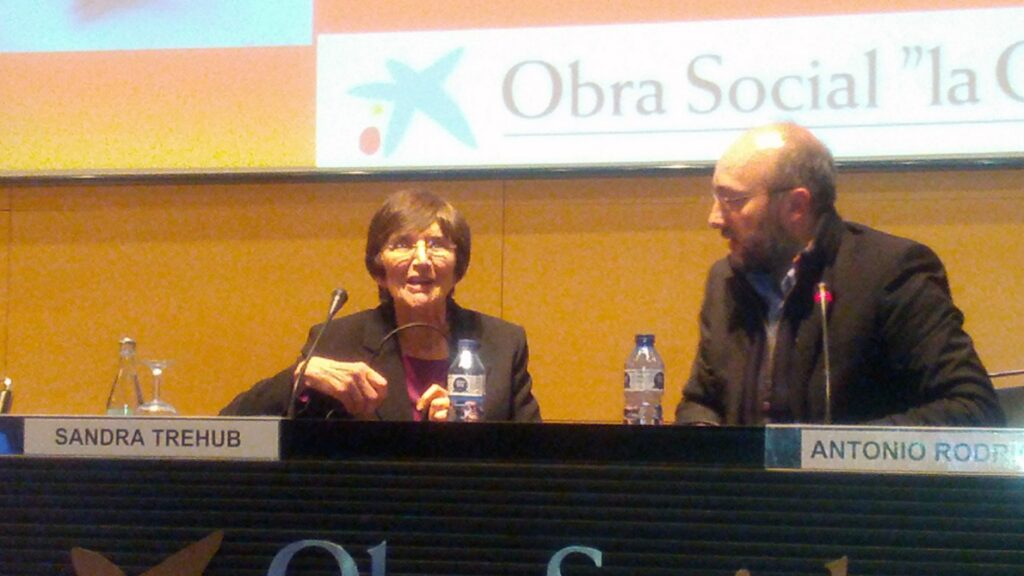Infants have an innate ability to recognize music, especially the changes in tone, but also in melody. From this idea, the professor in psychology at the University of Toronto, Sandra Trehub, explained how music plays a key role in the development of children and language acquisition. Trehub gave a lecture at Cosmocaixa on February 19, in the cycle “The music and its impact on the body and mind”, organized by Obra Social La Caixa and IDIBELL.
Music is a form of communication, especially during childhood. The specialist noted that, although “the babies have less hearing than adults, they are more sensitive to the music.” Their brain is a sponge, capable of absorbing new melodies and new sounds, with an efficiency higher than that of adults or older children”. Infants have a lot of memory for music, and retrieve many details”, Trehub explained. For example, at six months of age, an infant is able to perceive equally well rhythms of their culture and foreign rhythms. But “with twelve months the child have difficulty with foreign rhythms, indicating a certain cultural learning”, said the Canadian psychologist.
This “implicit musical knowledge” of children helps them build relationships with the environment. Mothers (and, to a lesser extent, parents) seem to know it, and weave the speeches with their young children with a strong musical tonality. Trehub wondered if “the mother’s speech is music for the baby’s ears.”
The infant-directed speech (IDS) has a characteristic intonation and rhythm, with a very strong musicality. This way of speaking is universal; appears, with some nuances, in all cultures. Even older children speak this way to babies. The psychologist at the University of Toronto pointed to studies showing that children prefer to be talked to that way, highlighting the effectiveness of IDS to calm infants.
The research showed videos of mothers talking to their children. In this sense, Trehub highlighted some cultural differences. For example, “non-Western [culture] mothers have a soothing speech and tend to maintain more physical contact with them.”
Besides talking with musicality, mothers often sing to their young sons and daughters. “Singing strengthens the emotional bonds between mother and child”, said Trehub. The way of singing to children seems to have a characteristic style. “We see different forms of execution, but they are all quite stable, and have nearly the same tempo and pitch”, said the researcher. Another feature is that “even though the mothers know many songs, they resort to a limited repertoire when they sing to their infants, and they repeat it”. Trehub said that around the first birthday, the infant begins to participate in the songs and move to the rhythm of the music.
Music and speech seem to go together. “Darwin proposed that music, or some form of expression called ‘protomusic’, preceded the language”, said Trehub, who dared to define speech as “a form of music”. The first babies’ babblings seem to reproduce the intonation patterns typical of the language spoken by parents. In this sense, the psychologist of the University of Toronto referred to studies that detect different cries of German and French newborns.

